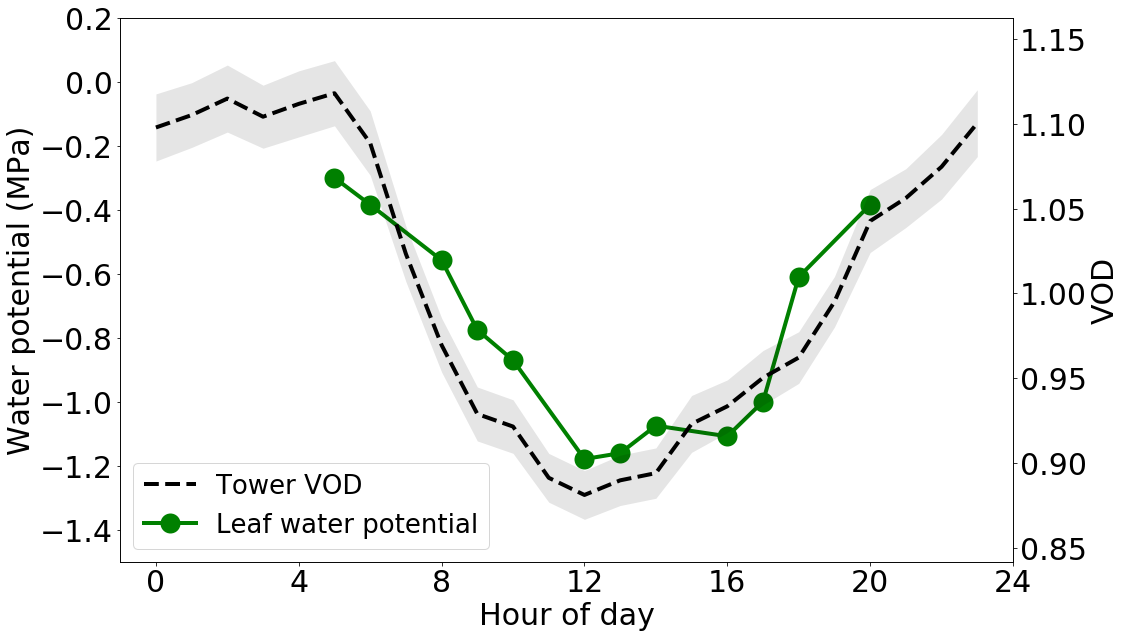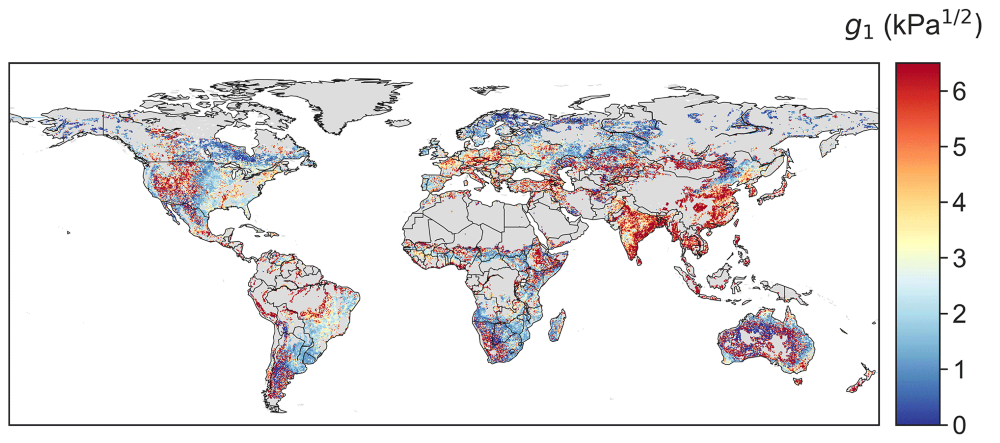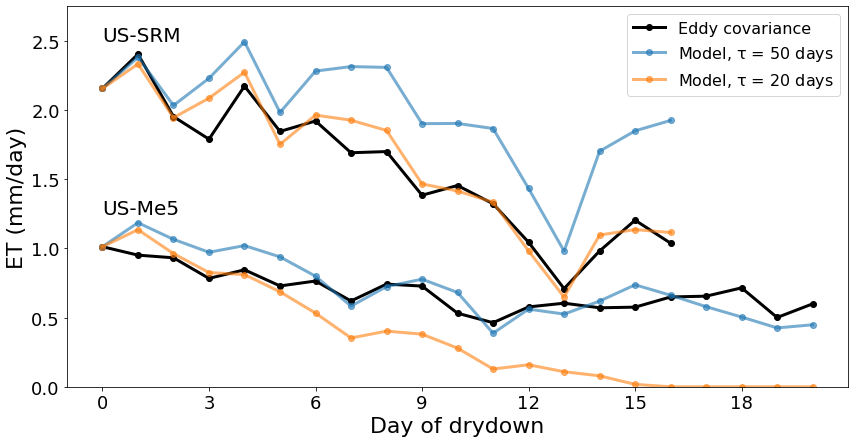Field demonstration of remote sensing of plant hydraulics
It’s difficult to validate the use of satellite observations of vegetation optical depth (VOD) to remotely sense vegetation water content, because of the large pixel size of microwave satellite data relative to ground truth data. We circumvented this scaling issue by using a microwave radiometer on top of a 90-foot tower looking down directly at a patch of forest, so its field of view was small enough to be homogeneous. VOD and leaf water potential displayed similarly shaped diurnal and seasonal patterns. This work was conducted at Harvard Forest with many collaborators including Alexandre Roy (U. Quebec Trois-Rivieres), Andreas Colliander (JPL), and Leander Anderegg (UCSB).  Diurnal cycles of leaf water potential and VOD
Diurnal cycles of leaf water potential and VOD

 Map of model-data-fusion-based estimates of Medlyn’s g1, a parameter related to stomatal opening
Map of model-data-fusion-based estimates of Medlyn’s g1, a parameter related to stomatal opening